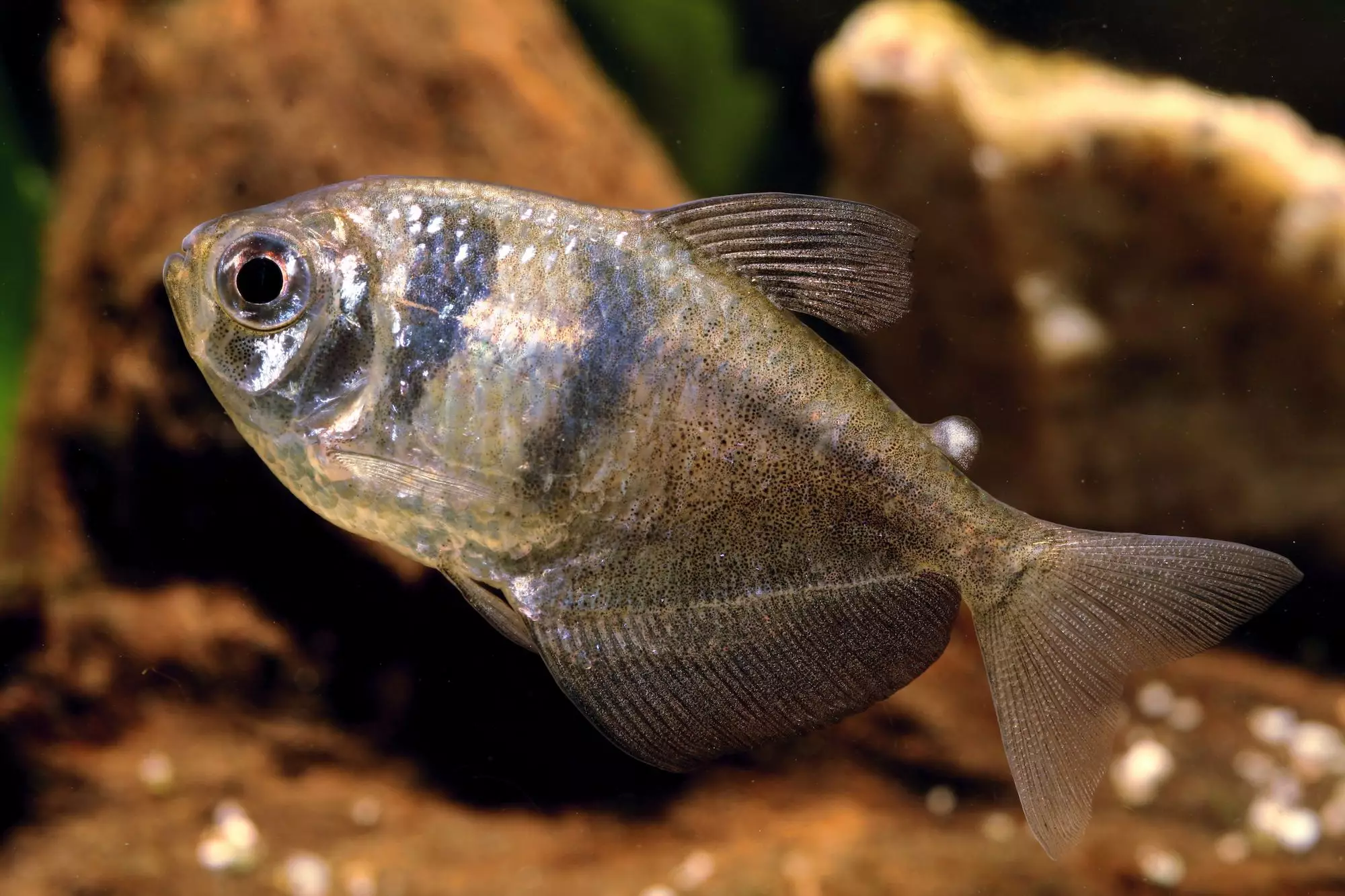The black widow tetra, also known as the black skirt tetra, is a captivating addition to the aquatic world due to its striking appearance and sociable demeanor. This species thrives in a well-maintained medium to large aquarium, where a school of these fish can contribute to a dynamic and visually engaging environment. Not only do they exhibit a unique color palette, but they also showcase behavior that is both fascinating and easy to manage for an aquarium novice.
Hailing from the tributaries of Brazil, Paraguay, and Argentina, black widow tetras are known for their adaptability and hardiness. Their appearance can vary significantly; the wild variety is typically silver with two noticeable dark bands and a black posterior, while selective breeding has led to the emergence of various color mutations, including the well-known GloFish, which has been enhanced with genetic traits from jellyfish.
In their native environments, black widow tetras inhabit slow-moving waters where the forest canopy offers both shade and food sources. Their diet primarily consists of insects, crustaceans, and small worms, which they hunt near the water’s surface. This feeding behavior highlights their natural instinct as active foragers, making them fascinating to observe in an aquarium setting.
The popularity of black widow tetras has escalated since they were predominantly sourced from the wild; now, virtually all specimens sold are captive-bred. This shift in breeding not only ensures a sustainable supply but also opens the door to multiple morphs, including the longfin variety and other color variations like the goldenskirt tetra. Such diversity adds to their appeal among fish enthusiasts.
Keeping black widow tetras can be relatively straightforward for those familiar with general aquarium maintenance. Ideally, they should be kept in groups of six or more to foster a sense of security and promote natural schooling behavior. Although they exhibit a generally peaceful temperament, they can occasionally nip at the fins of more delicate species with flowing fins, such as bettas or angelfish, necessitating care in tankmate selection.
When it comes to aquarium conditions, black widow tetras adapt to a variety of environments. However, they flourish best in tanks with subdued lighting and a neutral substrate. The presence of plants in their habitat is crucial as they not only mimic their natural environment but also provide hiding spaces which will alleviate stress. While these fish are not overly demanding concerning water quality, they typically prefer softer, slightly acidic conditions reminiscent of their native habitats.
Nutrition is an essential factor in the health of black widow tetras. These fish are omnivorous and will eagerly consume a range of foods, including live, frozen, freeze-dried, and flake options. To ensure optimal health, a varied diet that includes high-quality flake foods, brine shrimp, and even spirulina should be provided. This dietary diversity will help maintain vibrant colors and overall vigor.
Characteristic of schooling fish, black widow tetras do best when they can interact with others of their kind. This social structure not only supports their mental well-being but also encourages natural foraging behavior, making any feeding time an engaging activity for both fish and their aquarist.
Reproducing black widow tetras can be an engaging experience for aquarists eager to expand their fish family. Females generally appear larger and rounder, while males possess a slimmer figure with distinctive features like white spots on their caudal fin. For breeding, it’s typically recommended to house a few males with several females to encourage spawning.
To promote successful breeding, providing nutritious live foods is essential. Offering fine-leaved vegetation such as Java Moss encourages spawning as the female will scatter her adhesive eggs within these plants. Optimum conditions for breeding include a dimly lit aquarium set to temperatures between 78 and 80 degrees Fahrenheit.
Post-spawning, it’s crucial to remove parents from the tank promptly, as they may consume the eggs. With proper care, the eggs can hatch in approximately 24 hours, yielding tiny fry that require immediate feeding with freshly hatched brine shrimp or finely ground flake food.
The black widow tetra exemplifies what makes freshwater aquariums so captivating. Their beautiful coloration, combined with their sociable behavior and adaptability, makes them an excellent choice not only for seasoned aquarists but also for beginners. As one of the most popular species in the aquarium trade, understanding their needs and behaviors opens up a world of enjoyment in aquatic husbandry. Whether through casual observation or engaging in breeding, the allure of the black widow tetra remains a wonderful aspect of the aquarium experience.

